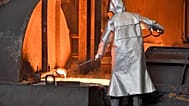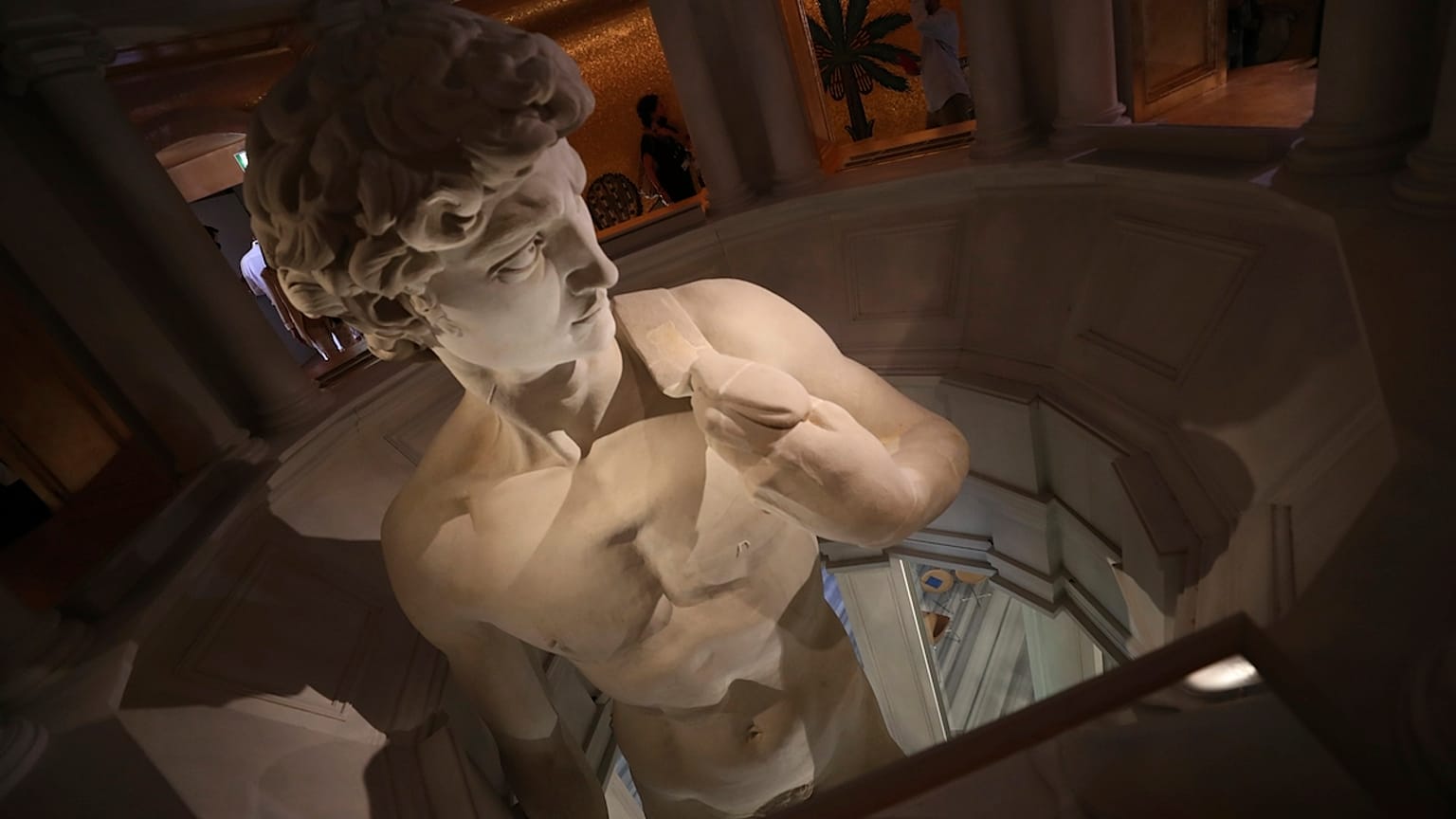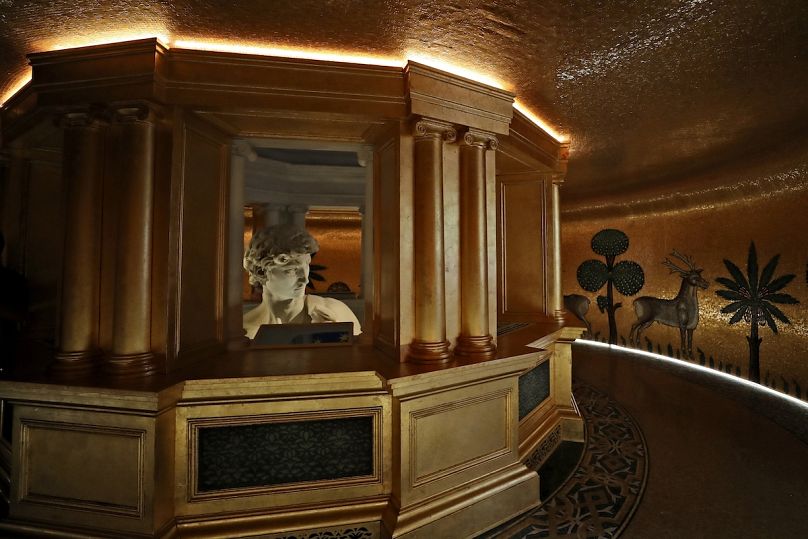A 3D replica of Michelangelo's David has led to discussions around art and censorship, due to only the statue's face being visible to most visitors.
At Italy’s Pavilion, a 3D replica of Michelangelo’s David looks tense, his marble dust eyes defiant and brows furrowed. For most visitors, his face is all that they will see.
The six-metre-tall reproduction of the Renaissance statue was unveiled at Expo 2020 Dubai, but its presentation has stirred debate about artistic expression and censorship.
Standing in the centre of a narrow octagonal structure, only David’s head and neck are visible to the public, while the rest of his body is reserved for VIPs with special access.
A different perspective?
David’s nudity is an integral part of the original masterpiece, which continues to awe onlookers at Florence's Galleria dell’Accademia, where it has been since 1873.
Staring up at Michelangelo’s towering work of art, taking in the details of David’s imposing stance, is what makes the statue so unforgettable for many. This perspective is lost at the expo, however, where his genitals and buttocks are hidden between floors, only visible to the select visitors on the lower level looking up.
This has led to some Italian media outlets criticising the display’s controlled view, calling it a form of censorship.
“Why can’t you see the whole body of the biblical hero, because you only see the head, the magnetic eyes staring at you silently? And where is the rest?” a la Repubblica reporter wrote, at one point referring to David's “beheading.”
Meanwhile, an art historian in Rome said choosing who can view the statue in full and who cannot creates a hierarchy.
“What the rich, the great and the good can see and what the ordinary folk can see shouldn’t be two different things,” said Professor Paul Gwynne, who teaches medieval and renaissance studies at the American University of Rome.
In response, artistic director David Rampello said the aim was to provide a new experience for visitors.
“It is no coincidence that David is not seen from the bottom to the top, as it normally is, but it welcomes people by looking at them in the face.”
Statue censorship
David’s nudity has been the subject of debate and censorship for centuries. Shortly after being first unveiled in Florence’s Piazza della Signoria in 1504, “the figure’s sculpted phallus was girdled with a garland of bronze fig leaves by authorities,” Artsy reports.
Even in more recent times, nude statues have continued to cause controversy. Italy’s Prime Minister, Matteo Renzi faced criticism in 2016 after ancient statues in Rome’s Capitoline Museum were covered up during a visit by Iran’s President Hassan Rouhani.
Re-creating David
The Expo’s replica of David was made with what organisers describe as one of the world's largest 3D printers, taking a team of Italian experts 40 hours of digital scanning to create. Artists also used filaments from recycled plastic material, then a mix of resins and marble dust.
“It’s a different way of approaching the same sculpture and putting it in another perspective,” Italian visitor Ricardo Mantarano said.
Dinara Aksyanova, a 31-year-old visitor from Moscow, remained unimpressed:
“Why was it only half? It makes no sense," she said. "The most interesting part is underneath.”



















